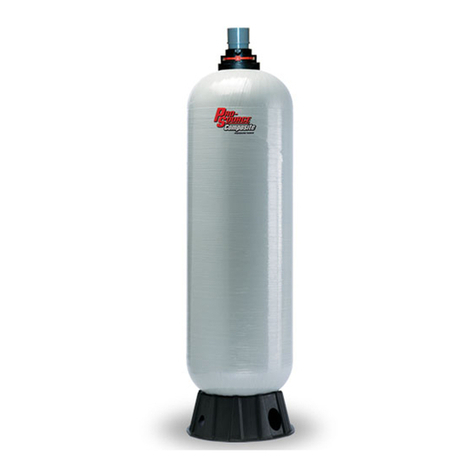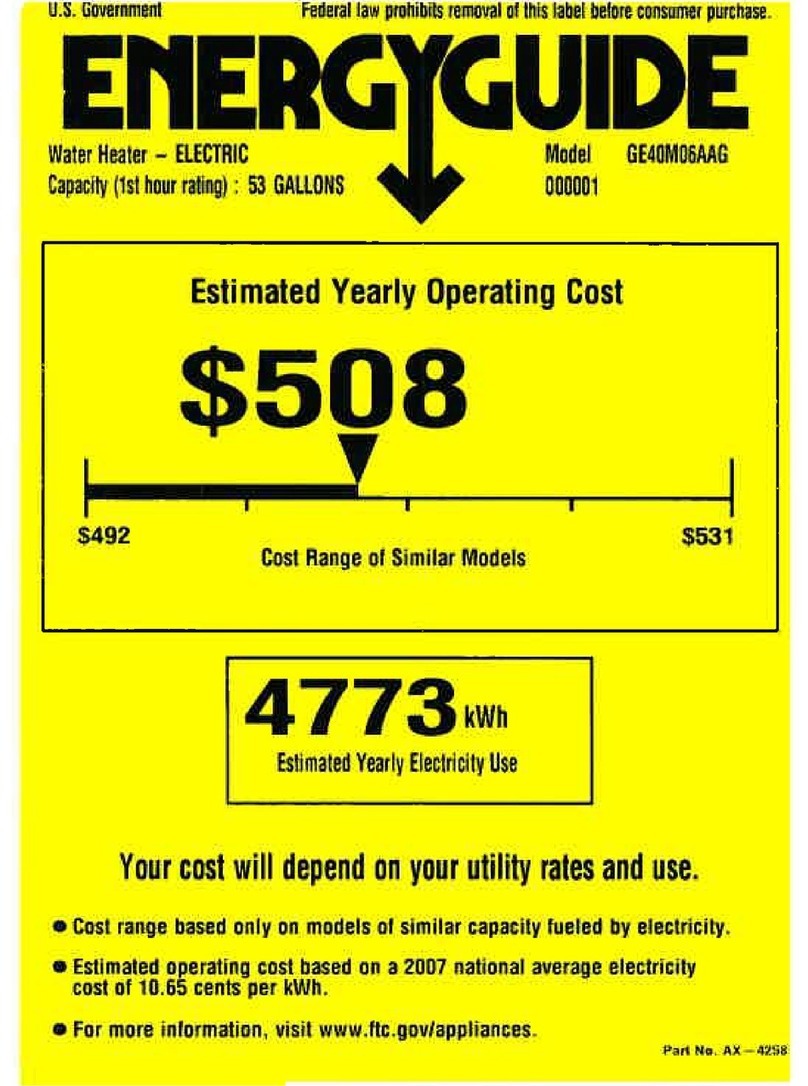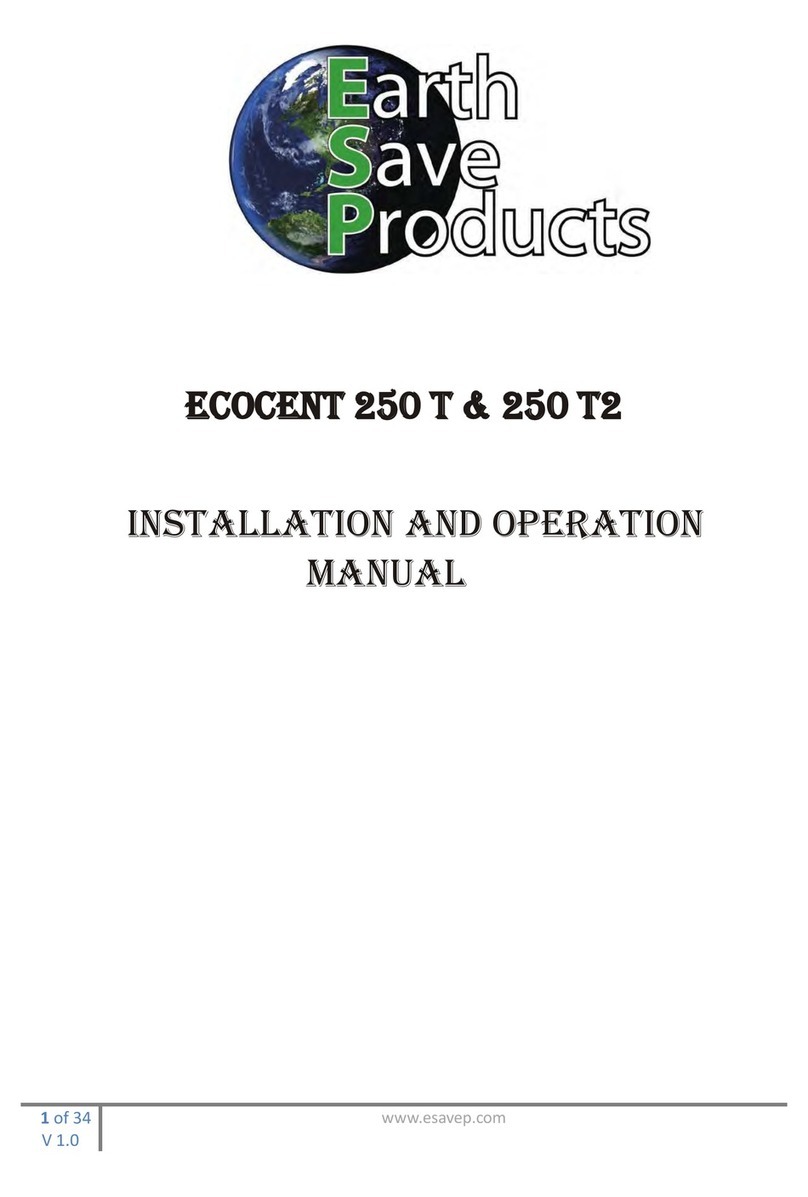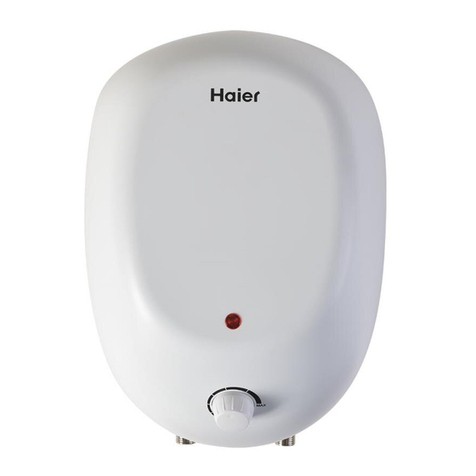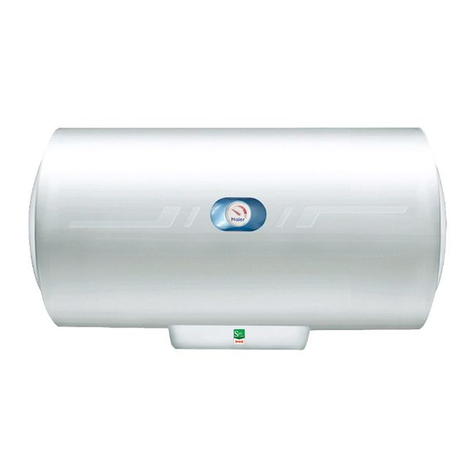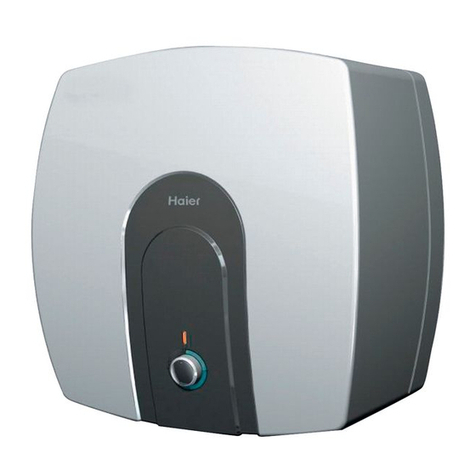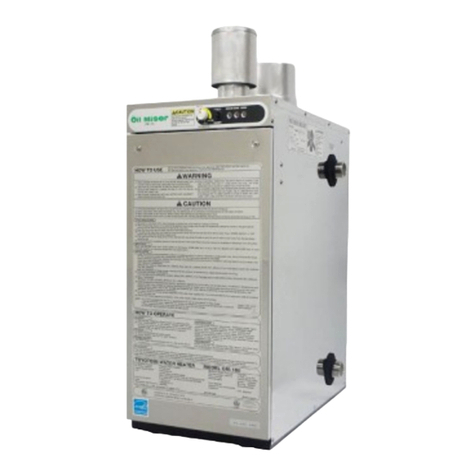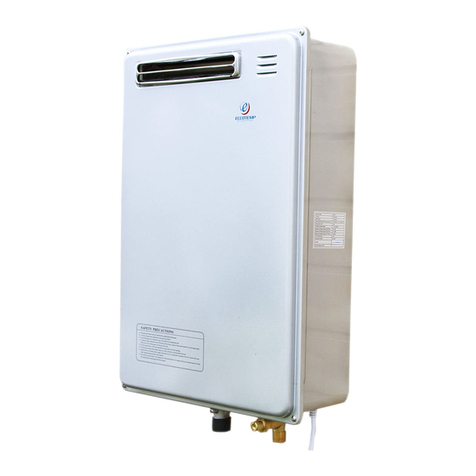
• Factory fitted Indirect Thermostat and Thermal Cut-out.
4.0 Positioning The Unit:
The unit must be vertically floor mounted. It can be placed anywhere convenient provided that the discharge
pipe(s) from its safety valves and air handling duct work can be correctly installed. Areas that are subject to
freezing must be avoided. Ensure that the floor is of sufficient strength to support the weight of the unit
when full with water. Pipe run lengths should be kept as short as possible for maximum economy and
efficiency: the use of secondary returns should be avoided. Access to associated controls, immersion heaters and
indirect controls must be possible for servicing and maintenance of the unit. Please do not install valves or pipe
work (except a discharge pipe) within 50mm (2”) of the T&P relief valve to allow insulation to be fitted. The
insulation is important to avoid heat loss.
Consideration must be given to the use of insulated ducting to carry air to and from the unit. Insulated ducting
must be used where condensate may form on the duct work.
IMPORTANT NOTE: DO NOT SITE THE UNIT IN THE SAME ROOM AS AN OPEN FLUED
APPLIANCE OR A ROOM WHERE AN OPEN FLUED APPLIANCE TAKES ITS COMBUSTION AIR
FROM, UNLESS THE MATTER HAS BEEN CAREFULLY CONSIDERED AND ADEQUATE
DUCTING AND VENTILATION HAS BEEN PROVIDED FOR THE UNIT (THE DHW ASHP) AND THAT
THE OPEN FLUED APPLIANCE IS FULLY CATERED FOR IN TERMS OF A SUITABLE AIR SUPPLY.
Please be sure to use appropriate lifting equipment when moving the unit.
Some things to be considered when positioning the unit:
Waste heat is useful heat.
The Ecocent works by harvesting ‘waste’ heat from areas where there is a build up of unwanted heat.
Traditionally, moist, warm air is expelled from building by mechanical means or by opening windows. The
Ecocent uses this waste heat to heat hot water. Air can be ducted from areas such as Bathrooms, Kitchen and, in
a commercial environment, Server Rooms to the Ecocent via 150mm insulated ducting. In a domestic
environment, this could include areas of high solar gain. The resultant cold, dry air is ejected from the building
via more insulated 150mm ducting. Alternatively, the Ecocent can be installed in areas where there is a build
up of heat negating the need for input ducting and the cold air can then be vented outside the building via
ducting.
Always be sure to site the unit and arrange the duct work to maximise the use of available waste heat. This will
allow the Ecocent to operate at maximum efficiently.
The secondary coils in the Ecocent enable direct connection to a second stable heat source, e.g. a solar heating
system or a boiler. Under no circumstances is the Ecocent to be installed onto an uncontrolled heat source e.g.
wood burner or back boiler.
Dehumidification – The Ecocent can be used to dehumidify rooms that are hot and damp – e.g. Laundry rooms
etc. The unit is equipped with a condensate drain that must be properly directed to a suitable waste pipe where
the condensate water (non acidic) can drain away. If the drain is into a main sewer it must have a trap installed
to prevent back smell through the Ecocent.
Directional Cooling – ducting can be fitted with air diverters (e.g the ESP “Ecobox”) so that cool exhaust air
from the Ecocent can be directed to chosen areas such as server rooms for commercial applications.
Positioning the Ecocent – some further points:
1. Decide upon the right route to be taken to move the unit in to the chosen position.
2. Try to move the unit in its original case to avoid damage.
3. Be sure to have the unit and electrics fitted by qualified electrician.
4. Ensure that no building materials or debris are allowed to enter the air ducts at the top of the unit or
any extension of the ducts.




